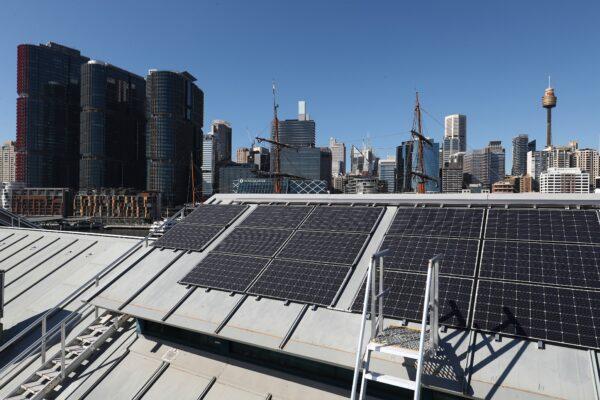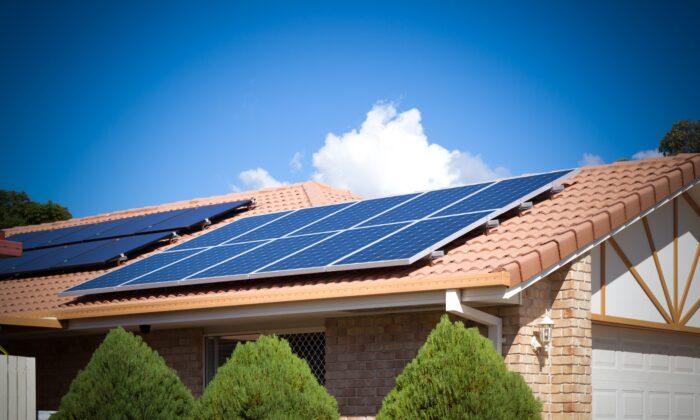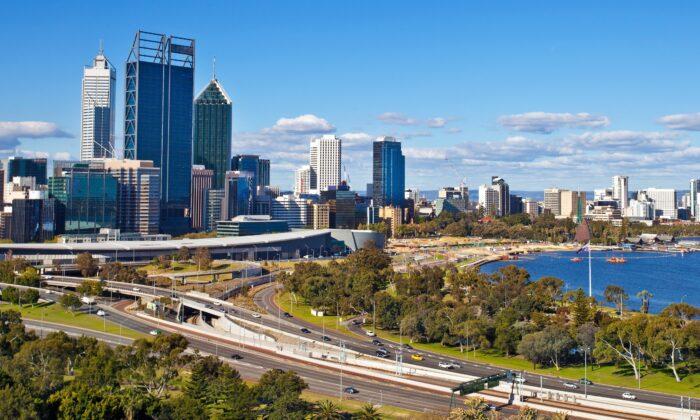Australia is a world-leading country when it comes to rooftop solar uptake, with more than 3 million small-scale solar system installations, covering over one in four homes and non-residential buildings.
The proliferation of solar has been driven by government incentives, with Australians told they can save thousands of dollars under the Small-scale Renewable Energy Scheme—a scheme which is set to benefit over 400,000 residences this year.
Estimates place rooftop solar at seven percent of the nation’s electricity generation in 2021, slashing Australia’s carbon dioxide emissions down by over 17.7 million tonnes.
Minister for Energy and Emissions Angus Taylor and Assistant Minister Tim Wilson pointed to the electricity costs saved by places like kindergartens, schools, community centres, pubs, clubs, and homes.
“The Albert Park Kinder in Victoria, Australia’s first carbon neutral community kindergarten, is showing the difference small solar installations can make. After installing solar panels, solar batteries, and energy efficient equipment, the kindergarten has seen big cuts to its power bills,” Taylor said.

“Australia is the global leader in rooftop solar and we’re adding up to 2,000 small solar installations every business day,” Wilson said. “Solar empowers small businesses and local community groups to cut both their costs and emissions.”
However, the proliferation of solar and other forms of renewable, intermittent power generation has raised significant concerns that Australia could lose its energy security without significant reform to existing infrastructure.
In particular, Australia’s Energy Security Board (ESB) warned in July that the nation could face blackouts and price shocks unless several key issues had been addressed; namely, energy storage, and maintaining grid frequency and inertia.

Furthermore, CEO of solar monitoring software and hardware provider Solar Analytics, Stefan Jarnason, said that reports by ESB and the Australian Energy Market Operator (AEMO) outlined a need for a mechanism to manage rooftop solar, also known as distributed energy resources (DERs).
Specifically, DERs currently output into the grid when available by default without any form of control or management, with no interaction with grid operators. But Jarnason suggested that such a mechanism was critical, without which there would be little to no control over the rapidly growing solar generators.
“The number one issue right now is that there is near zero visibility of how DER acts on the grid,” Jarnason had told The Epoch Times in an email.
This has been demonstrated during instances when thousands of solar panels had been temporarily cut from the grid by AEMO in order to avoid inertia shortfalls.
“So DER will continue to grow, and we will sadly face a rocky period of higher than necessary prices due to a disorderly transition.”
The ESB has attempted to remedy this through a new capacity mechanism that would pay “flexible” energy generators—generators which are able to fire up when needed, such as gas and hydro—to remain online and available during periods of low wind and solar.






Friends Read Free